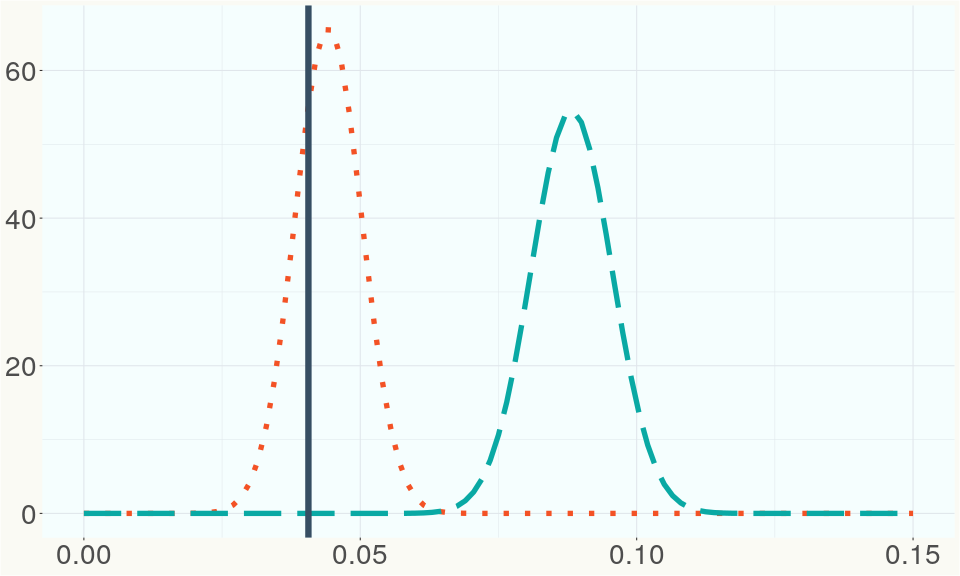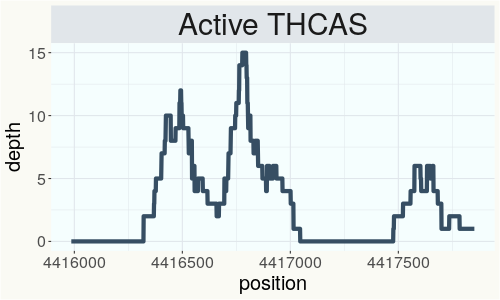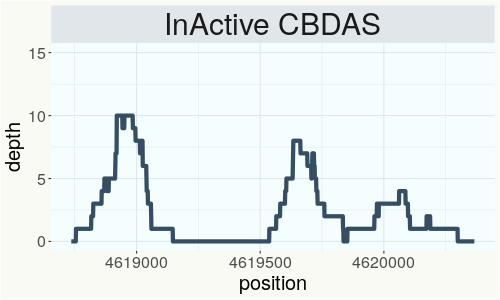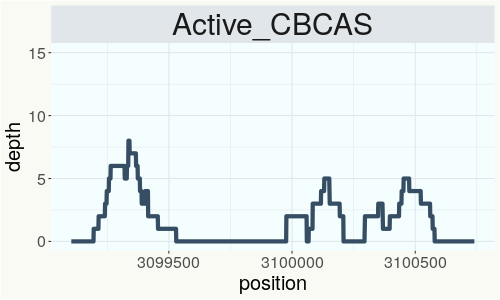Super Blue Dream
RSP 11011
Grower: LV Natural Caregivers
General Information
- Sample Name
- F20161107-08-5_01FEB2017
- Accession Date
- September 17, 2017
- Reported Plant Sex
- not reported
- Report Type
- StrainSEEK v2 3.2Mb
- DNA Extracted From
- Unknown
The strain rarity visualization shows how distant the strain is from the other cultivars in the Kannapedia database. The y-axis represents genetic distance, getting farther as you go up. The width of the visualization at any position along the y-axis shows how many strains there are in the database at that genetic distance. So, a common strain will have a more bottom-heavy shape, while uncommon and rare cultivars will have a visualization that is generally shifted towards the top.
Chemical Information
Cannabinoid and terpenoid information provided by the grower.
Cannabinoids
- THC + THCA
- 18.348%
- CBD + CBDA
- 0.031%
- THCV + THCVA
- 0.%
- CBC + CBCA
- n/a
- CBG + CBGA
- n/a
- CBN + CBNA
- n/a
Terpenoids
- α-Bisabolol
- 0.001%
- Borneol
- n/a
- Camphene
- 0.022%
- Carene
- 0.003%
- Caryophyllene oxide
- 0.001%
- β-Caryophyllene
- 0.013%
- Fenchol
- n/a
- Geraniol
- 0.001%
- α-Humulene
- 0.018%
- Limonene
- 0.101%
- Linalool
- 0.107%
- Myrcene
- 0.244%
- α-Phellandrene
- n/a
- Terpinolene
- 0.005%
- α-Terpineol
- n/a
- α-Terpinene
- 0.002%
- γ-Terpinene
- 0.008%
- Total Nerolidol
- 0.003%
- Total Ocimene
- 0.009%
- α-Pinene
- 0.913%
- β-Pinene
- 0.239%
Genetic Information
- Plant Type
- Type I
File Downloads
The bell curve in the heterozygosity visualization shows the distribution of heterozygosity levels for cannabis cultivars in the Kannapedia database. The green line shows where this particular strain fits within the distribution. Heterozygosity is associated with heterosis (aka hybrid vigor) but also leads to the production of more variable offspring. When plants have two genetically different parents, heterozygosity levels will be higher than if it has been inbred or backcrossed repeatedly.
The ratio of reads mapped to Y-contigs to reads mapped to the whole Cannabis genome (Y-ratios) has been demonstrated to be strongly correlated with plant sex typing. This plot shows the distribution of Y-ratios for all samples in our database which were sequenced with the same method (panel or WGS) as this sample and where this sample falls in the distribution.

This chart represents the Illumina sequence coverage over the Bt/Bd allele. These are the three regions in the cannabis genome that impact THCA, CBDA, CBGA production. Coverage over the Active CBDAS gene is highly correlated with Type II and Type III plants as described by Etienne de Meijer. Coverage over the THCA gene is highly correlated with Type I and Type II plants but is anti-correlated with Type III plants. Type I plants require coverage over the inactive CBDA loci and no coverage over the Active CBDA gene. Lack of coverage over the Active CBDA and Active THCA allele are presumed to be Type IV plants (CBGA dominant). While deletions of entire THCAS and CBDAS genes are the most common Bt:Bd alleles observed, it is possible to have plants with these genes where functional expression of the enzyme is disrupted by deactivating point mutations (Kojoma et al. 2006).



This chart represents the Illumina sequence coverage over the CBCA synthase gene.

Variants (THCAS, CBDAS, and CBCAS)
No variants to report
Variants (Select Genes of Interest)
No variants to report
Nearest genetic relatives (All Samples)
- 0.002 Snoops Dream (RSP11003)
- 0.003 Blue Dream (RSP11227)
- 0.005 Blue Dream (RSP11012)
- 0.005 Blue Dream (RSP11032)
- 0.006 Blue Dream (RSP11005)
- 0.006 Blue Dream (RSP11008)
- 0.006 Blue Dream (RSP11009)
- 0.007 Blue Dream (RSP11342)
- 0.007 Blue Dream (RSP11007)
- 0.007 Blue Dream (RSP11017)
- 0.007 Snoops Dream (RSP11031)
- 0.009 Blue Dream (RSP11006)
- 0.009 Blue Dream (RSP11033)
- 0.015 Blue Dream (RSP11010)
- 0.015 Blue Dream (RSP11004)
- 0.103 Serious Happiness (RSP10763)
- 0.137 Doug s Varin (RSP11243)
- 0.148 UnObtanium (RSP11611)
- 0.148 Electra (RSP11366)
- 0.149 JL 4th Gen 7 (RSP11153)
Most genetically distant strains (All Samples)
- 0.422 CS (RSP11208)
- 0.405 Carmaleonte (RSP11207)
- 0.404 Cherry Blossom (RSP11328)
- 0.403 Feral (RSP11206)
- 0.392 R3in134 (SRR14708220)
- 0.392 Candy Kush (RSP11492)
- 0.390 BagSeed (RSP12627)
- 0.386 Carmagnola (RSP11202)
- 0.385 Feral (RSP10891)
- 0.385 R1in136 (SRR14708227)
- 0.385 R1in136 (SRR14708226)
- 0.385 80E (RSP11213)
- 0.383 Feral (RSP11205)
- 0.378 Feral (RSP10892)
- 0.377 XBL1 (SRR14708207)
- 0.376 R3in134 (SRR14708218)
- 0.376 Bialobrzeskie (SRR14708244)
- 0.376 R1in136 (SRR14708225)
- 0.375 R1in136 (SRR14708237)
- 0.372 Carmagnola (RSP11037)
Nearest genetic relative in Phylos dataset
- Overlapping SNPs:
- 37
- Concordance:
- 37
Nearest genetic relative in Lynch dataset
- Overlapping SNPs:
- 8
- Concordance:
- 8
Blockchain Registration Information
- Transaction ID
-
657659de27b0bdb2
7fb770583f4b2bf1 91b0a40c5fe59e7f 21520e8772cdad84 - Stamping Certificate
- Download PDF (845.8 KB)
- SHASUM Hash
-
8eba9e724f382ea86f6a9105f63a1dcd deb03cf8c8156ed8 09ba908211cb845d